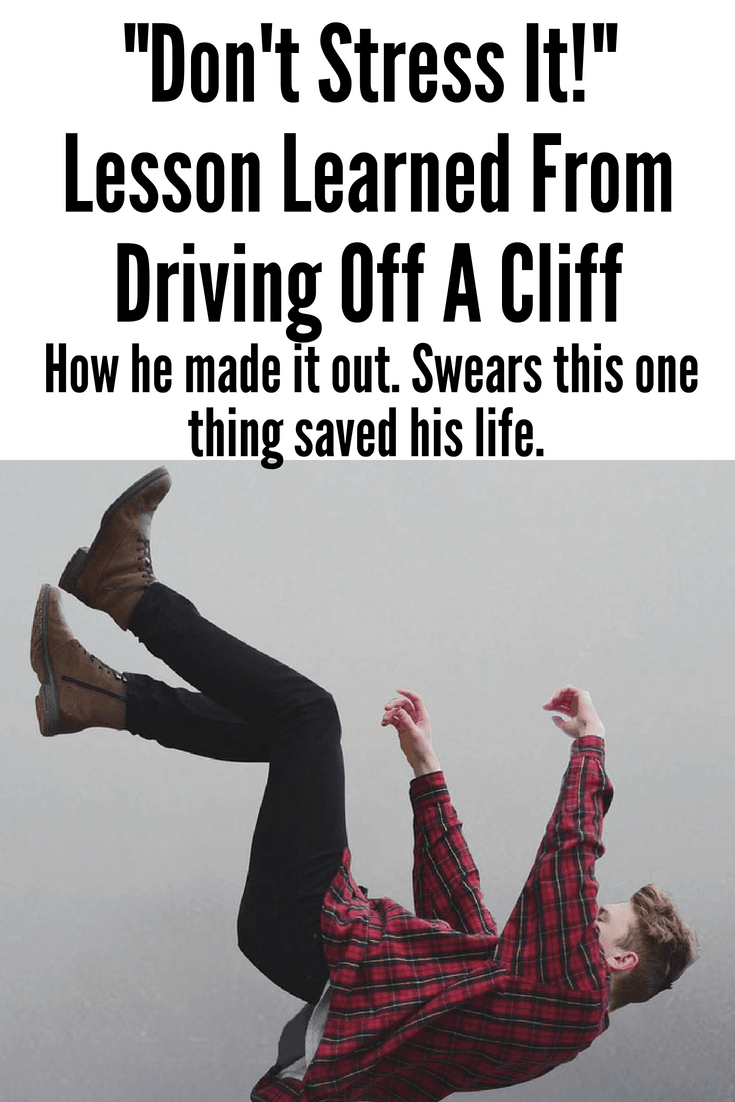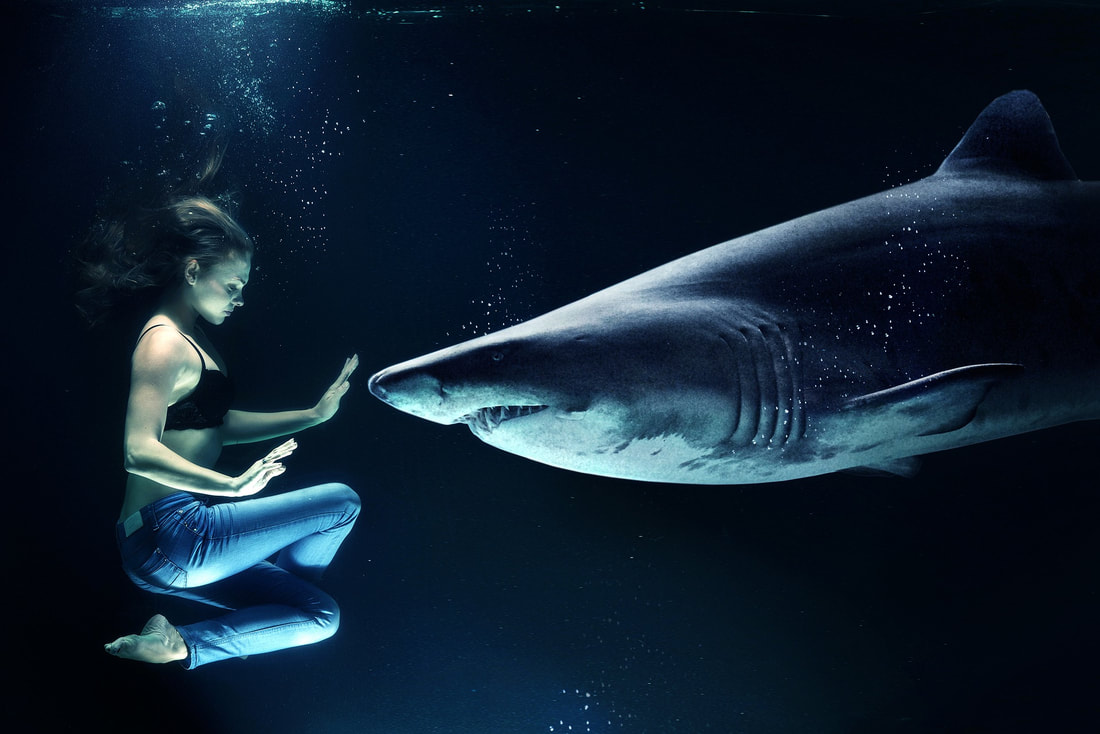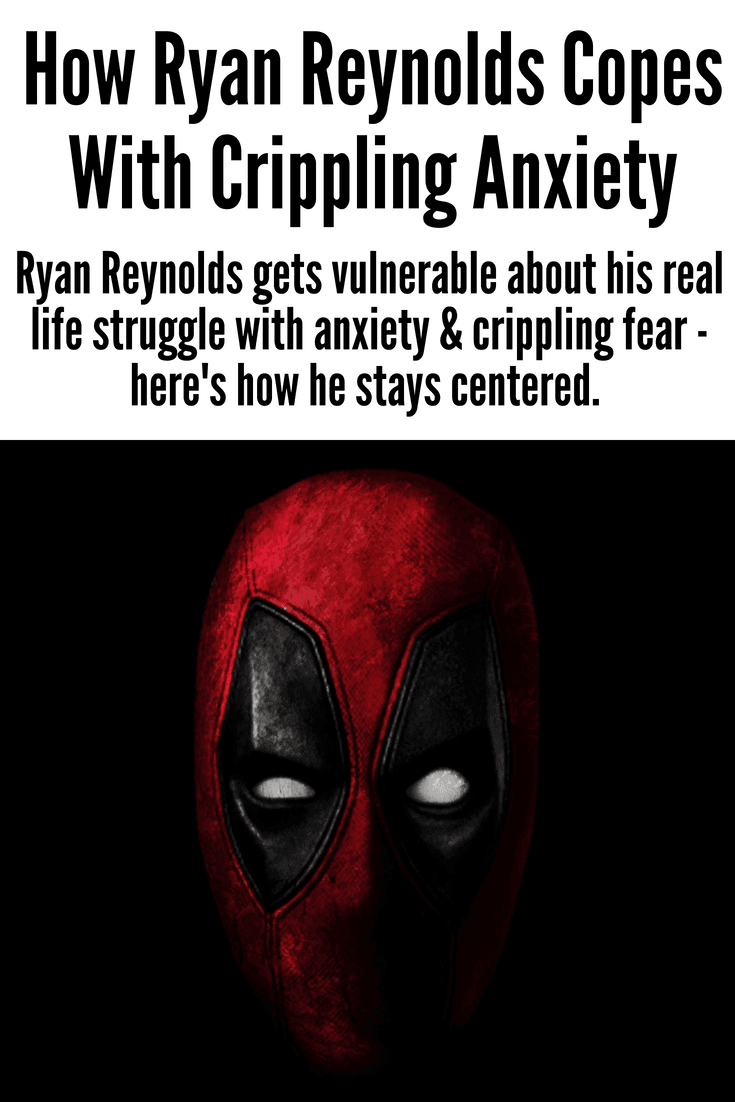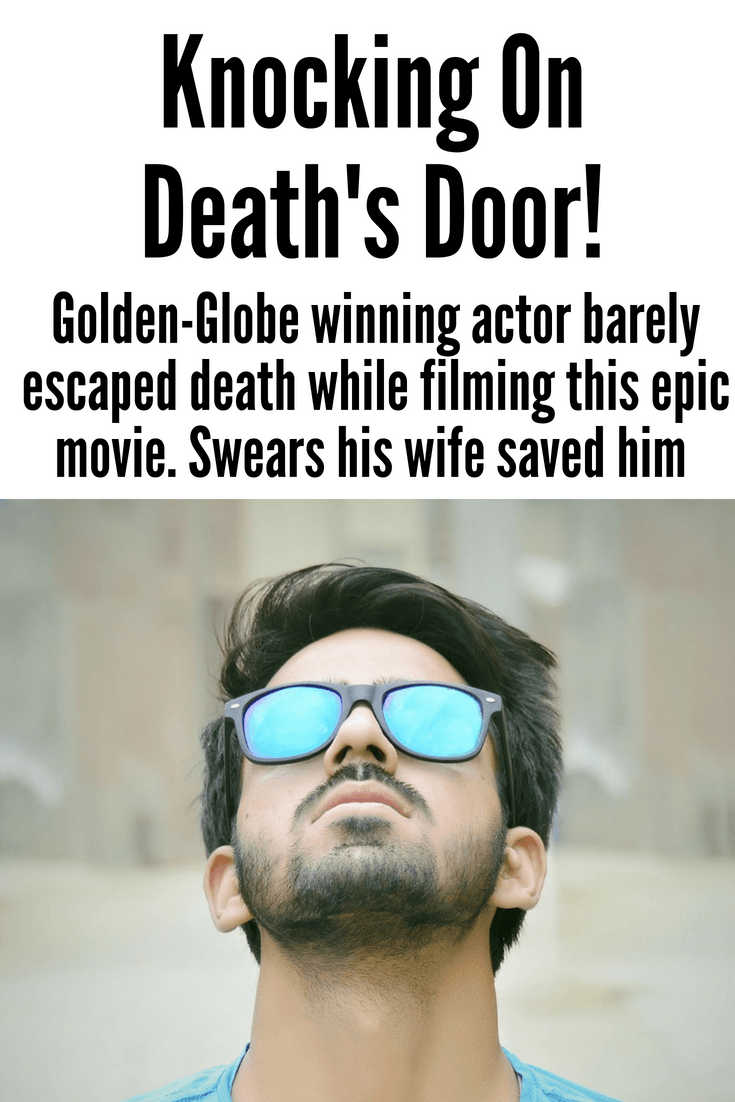|
Procrastination is a silent killer.
Whether it’s putting off a daunting project… delaying on important deadlines… or allowing your to-do list to pile up - procrastination is a stressful and destructive habit. Growing up, I was the king of procrastination. Some of my friends would wait until the night before an assignment was due, to finish their homework. I’d wait until the morning before. I’d set my alarm for 5am and pound out page…after…page… until that puppy was complete. Sometimes I got away with it. Other times I wasn’t so lucky. It was extremely stressful, and I paid for it royally. Yet, I kept resorting to it despite the consequences. According to a 2007 review by the University of Calgary, psychologist Pier Steel found that procrastinators performed worse… struggled with more medical problems… were more likely to waste money on taxes… and put off pressing decisions such as retirement or saving money. The thing is most procrastinators know it’s hurting them... So why do they keep doing it? The brain may reveal some answers. Researchers from Ruhr-University Bochum in Germany, had 264 healthy subjects undergo MRIs. When looked at the results, they found two key differences between the brains of procrastinators’ and action takers’. Difference #1: Procrastinators Had Larger Amygdala’s Here’s what the amygdala does: The amygdala is basically the “smoke detector” of the brain. It’s on constant lookout for threats such as an attacker, wild animal or other dangers. If it detects one of those, it sounds the alarm, signaling your body for the flight-or-flight response. Yet, just like a regular smoke detector, it’s susceptible to false alarms. This can happen even if the fear is simply imagined. According to researcher Erhan Genc, here’s what a larger amygdala means: “Individuals with a higher amygdala volume may be more anxious about the negative consequences of an action -- they tend to hesitate and put off things.” In essence, a larger amygdala means more sensitivity to fear, which stops them from acting. It’s this fear or uncertainty that creates hesitation. The interesting thing is that taking action is one of the many things that can actually “calm” down the amygdala (and limbic system). According to Dr. Alex Korb, in his book The Upward Spiral: “Making decisions includes creating intentions and setting goals — all three are part of the same neural circuitry and engage the prefrontal cortex in a positive way, reducing worry and anxiety. Making decisions also helps overcome striatum activity, which usually pulls you toward negative impulses and routines. Finally, making decisions changes your perception of the world — finding solutions to your problems and calming the limbic system.” Difference #2: Procrastinators Had Fewer Connections Between the ACC & Amygdala Action takers had more connections between the dorsal anterior cingulate cortex (ACC) and the amygdala. One of the roles of the ACC is assisting decision-making and regulating emotions. Thus, their ability to keep negative emotions at bay (such as fear) is enhanced because they have more connections between those two parts of the brain. Procrastinators on the other hand, had fewer. According to Erhan Genc: “Due to a low functional connection between amygdala and dorsal ACC, this effect may be augmented, as interfering negative emotions and alternative actions might not be sufficiently regulated.” Because there are fewer connections between these two parts of the brain, it’s harder for procrastinators to regulate negative emotions such as fear. The ACC usually helps them cope but since they have fewer connections, it makes it more difficult. Studies like these can put the blame on the brain, and it’s easy to believe there’s nothing that can be done since it’s “in our heads”. So are procrastinators hopeless? Hardly, while it’s interesting to see the differences in the brain, the question becomes: Do procrastinators’ brains start that way? Or does the brain develop that way because of the act of procrastination? In fact, there are studies showing that the size of the amygdala can be reduced by things such as meditation. And that’s just the tip of the iceberg. For more ways to overcome procrastination, check out my upcoming program Primal Discipline. This new program focuses on developing intense self-discipline for consistently taking action. It’s not about educating you on procrastination, but giving you the skills to break-free from it. It’s about giving you the confidence in yourself to consistently finish projects and quit putting things off. Kelan Ern The Renegade Life Coach
0 Comments
Incredible true story:
It was a rainy night, and Chet was racing in his 1968 red charger on winding country roads. His friend was driving an Austin-Healy. During the race, Chet whips across a turn and hydroplanes across the lane, while another car is heading towards him from the other direction. He accelerates to avoid hitting it but then can’t make the next turn, so he bolts through someone’s lawn and launches towards a tree. In that moment, images flood his mind: his father screaming at him for wrecking the car… the damage to the vehicle… the punishment… all of it. As his car struck the tree, it spun around it, and then tumbled 260 feet off a cliff. Meanwhile, his friend saw Chet’s car fly off the cliff. He’s balling his eyes out - thinking he’s a goner. Until he sees Chet running up the hill towards him yelling, My car! My car! Forget your car! I thought you were dead! his friend replies. Remarkably, there was not even a cat scratch on him. How? Chet’s training kicked in. When the car rolled down the cliff, he bounced around the interior of the car, and focused on relaxing every muscle in his body. He knew if he tensed up he was going to be trouble. By relaxing his muscles, his bones were able to keep their flexibility. After the incident Chet (who became a famous author and speaker) stated: “The only reason I’m here is because of all the karate training” His training taught him to:
Now you don’t have to find the nearest dojo and pursue a black belt – the same principle applies. Relaxing allows you to absorb the “impact” of stressful events. Whether navigating small ripples of stress or massive tidal waves, relaxing will allow you to skillfully ride the rough waters. That’s why it’s critical to have daily rituals that put you at your best, the kind that allow you to charge into the day with confidence and centeredness – not overwhelm and anxiety. And keep doing those rituals day-after-day so that your “training” will kick in at the right time as well. Not just if you have time. But as a standard for each day. Because being at your best doesn’t happen by accident. We don’t rise to our level of expectations; we fall to our level of training -Archilochus Kelan Ern The Renegade Life Coach P.S. There are hundreds of techniques for making you feel more confident, centered and “firing on all cylinders” each day. And while there’s no “right” way, it’s about finding that ones that work for you. If you want ideas and tools that have worked for others there’s an entire collection of techniques I’ve put together - you can learn about it here. Nature's Impact on The Brain4 Lessons on Fear from SharksWilliam Winram is a Canadian world-record free diver.
One day, he was spearfishing half-a-mile off the coast of Mexico when something nudged him. He turned to see a 1,000lb tiger shark - immediately he froze with fear…his heart thumping out of his chest… physically trembling… thinking to himself, I’m going to die. Because he learned these sharks were man-eaters. He tosses a fish towards it as bait, but the shark doesn’t go for it. Then he accidently drops his spear because he’s shaking so much, so he lunges to recover it - and the shark darts away. Confused by the shark’s response, he swims back to shore. The whole way back, the shark is swimming beside him, but keeping a set distance. If William swam closer, it would swim away. If he swam away, the shark would get closer - always keeping that “comfort zone” though. When he finally approached the shore, he dropped his gear and decided to try something radical. He swam directly towards the animal and – immediately it swam away. He realized this apex predator was not a mindless killing machine. Since then, he’s been free diving with sharks (including Great Whites) to discover the truth about these feared predators. Here are some of his lessons: (Just like the shark swimming parallel to William back to shore, these lessons “swim” parallel to dealing with fear in general) #1: It Looks for An Advantage Even though Great Whites aren’t the mindless killers movies like Jaws portray them as… they still are intelligent predators. The shark is always looking for an advantage, so when he swims with them, he always has a partner helping him - on the lookout for other sharks. #2: Keep Eye Contact Winram says, another way to counter this is eye contact. If the shark knows it’s spotted, it feels its advantage is wiped out. Likewise, fear tends to deflate and lose much of its power when you identify it and stare it down for what it really is. #3: Know When To Be Afraid According to Winram, when you can see the black eyes of a shark (the kind that stare into your soul like a house cat) that’s when you have nothing to worry about. On the flip side, when it covers its eyes with a membrane (to protect it) – that’s when it’s about to strike. With fear, it’s about figuring out when to fear and what not to fear. #4: They’re honest. Winram says: Great whites are honest, there’s no bullsh*t. Fear is pretty honest as well; it shows us where we are bumping up against are limitations. Whether they are imagined or not, they still feel real to us. It shows us where our current limits are. Key words: “Current limits” Because they don’t have to stay at that level forever. P.S. One of the most inspiring examples of this is Robert Downey Jr.'s journey and how he reinvented himself after huge setbacks. Hugh Jackman is known for his iconic role as Wolverine (X-Men Movies), the mutant with blades emerging from his knuckles.
He’s also movies such as Les Miserables, The Greatest Showman, The Prestige, Australia, Prisoners and many more. But like many achievers, his challenges are in the dark. For example, when Jackman was 14-years-old, he hit a serious growth spurt - growing an entire foot in one year. One day, during a cricket match, he stretched up to catch a ball, twisted and passed out. He had ripped out all the muscles from the base of his spine. Since his bones were rapidly-growing, his muscles couldn’t keep up. This left him with an injury that took two years of rehab. This forced him to build his core strength –later giving him an advantage on Broadway and in the more physical roles like X-men. But X-men was not smooth parasailing either. When the first X-men movie rolled out, Jackman didn’t even get the part as Wolverine. Russell Crowe was the director’s first pick but he turned it down - so they hired Dougray Scott instead. But due to a scheduling kerfuffle and a motorcycle accident he dropped out. That’s when Jackman was called in. At that point, the crew was already four weeks into filming. So he felt behind and uncomfortable with all the pressure to catch up - sensing his anxiety, actor Ian McKellen (who played Magneto) pulled him aside and told him, Your stuff is good. Even if it feels uncomfortable, that can sometimes be right. He’s kept this white pearl of wisdom with him over the years: If I look back, I think of some of my more successful things, [They] have been things I’ve been most nervous about. And probably most unsure of when I began. -Hugh Jackman When he was hustling with Les Miserables, a similar anxiety swept over him. He went to a friend for help, who told him: Embrace the fear. The fear is good. It’s got you where you are today. It makes you work. The fear sometimes makes you work really hard. [And when you walk out on stage, thank that fearful side, and then let your confident and strong side take the stage instead.] Because both sides have their place. And serve a purpose. In a TED talk, Mark Bezos shares his first day on-the-job as a volunteer firefighter.
In his town, the only way to get in on the action as a volunteer was to arrive at the scene quickly. On this particular day, he was the second volunteer to arrive– so he had high-hopes that he’d get to help out. The fire captain was chatting with the frantic homeowner. Then he calls over the volunteers to dole out their assignments: The fire captain tells the first volunteer, “Go inside and save the dog” Mark was so jealous because this guy was surely going to be the hero by saving this pup. Then the captain calls him over, “Mark I need you to go into the house, I need you to go upstairs – past the fire and I need you to get this woman a pair of shoes” ...not exactly the heroic act he was looking forward to - but he charged into the house, up the stairs, past the fire, into the bedroom, grabbed the shoes – and saved them. Two weeks later, the fire department receives a letter from the homeowner expressing her gratitude and highlighting that someone even got her a pair of shoes. But over the years, Mark’s seen a lot and hammers-home an important lesson on courage: “Don’t wait to make a difference in somebody’s life. If you have something to give, give it now. Serve food in a soup kitchen. Clean up a neighborhood park. Be a mentor. Not every day is going to offer us a chance to save somebody’s life but every day offers us an opportunity to affect one. So get in the game. Save the shoes.” Recently, I was moseying through a horse stable in the Kaida plateau of Japan.
It housed Kiso Horses: a rare breed with large heads, stubby legs and such thick hooves that they don’t need horseshoes - making them exceptional at farm-work and lugging supplies through the mountains. Plus, they’re pretty easy-going, unlike ponies (which I’ve heard can be little stinkers). Anyway, while I watched these beasts chomp on grass, it reminded me of a story about the number one quality of winning racehorses. Here goes: The fastest horse wins the race, that’s what speaker Jim Rohn believed…until a thoroughbred horse trainer told him, it’s not the fastest that wins… It’s the horse with the most “class” that wins the race. Class is: Calling on a reserve of energy. It’s the ability to overcome any number of challenges during a race. Rohn continues: Class doesn’t mean you never get tired. But it does mean you never show it. Class doesn’t mean you’re not tempted to quit sometimes. But it does mean you never actually do. In the final yards of a race, class makes the difference. No matter what your particular “race” is – it’ll be teeming with obstacles and challenges trying to knock you off track, distract you or slow you down. (Robert Downey Jr.'s story is a perfect example of this) (Some internal. Some environmental) Rarely are there perfect conditions. But whatever YOUR race is: Even if you're not the fastest, the smartest, the most talented, the most experienced, the most “educated” Strive for having the most “class” instead. Having the most reserves of energy... the most persistence for overcoming obstacles... the most grit for chasing answers... so you can rest-assured that you'll eventually build your skills and find a way to the finish... Because you'll keep trotting along while others exit the race. But it starts (and ends) with class. A couple weeks ago, I was in Tokyo eating an authentic Sumo Wrestler meal called Chanko Nabe.
It’s a hot pot filled with veggies, fish and other meats. And MAN is it good! Apparently, sumo wrestlers eat one of these per day. For us, it took three people just to take one down. But what really struck me about Tokyo was this: This mega-city has grown to 37.8 million people (metro population) despite being destroyed over… and over again by war, fires, tsunamis and earthquakes. One of the worst was the Great Kanto Earthquake. This 7.9 magnitude earthquake awakened a devastating 40-foot tsunami that swept away coastal villages…dropped dozens of buildings… tipped over stoves and broke gas mains causing fires throughout the city - that then merged into a 300-foot-tall “fire tornado” – called a dragon twist (which the fire department couldn’t do much about because water mains were destroyed). In a single day, close to half the city was destroyed. Yet, despite all of these disasters Tokyo has rebounded and emerged stronger. More fortified. More resilient. Each time it’s allowed leaders to take a step back and look at how to improve the city. It’s a similar opportunity after personal failures… setbacks… and rejection… There’s a choice to rebuild… come back stronger… more prepared… and armed with new knowledge about what to do differently next time. (Not always easy. But possible) Some will see it as starting over. But if you’re honest with yourself, you’re never really starting over - you always lug your knowledge, experience and wisdom on your back and carry it with you wherever you go. You may sometimes forget it’s there… but it’s there. And tucked in there are the tools and raw materials to rebuild. After the 2011 earthquake in Japan, rescuers found an elderly couple who’d been trapped for three days in a building. When a reporter asked the husband if he was okay, he smiled at the camera and said, “Let’s rebuild again.” He had survived the 1960 tsunami and knew the drill. So if you’ve recently faced defeat… failure… or recovering from a setback here’s your chance to rebuild again. He’s crude. He’s funny. He’s zany. He heals. Deadpool is a former military officer, turned anti-hero after a cancer-treatment gone wrong – leaving him with healing powers. But there’s more than meets the eye with golden-globe nominated Deadpool actor, Ryan Reynolds. You’d never guess it but he struggles with anxiety. In fact, before every talk-show interview he fills with dread and gets sick to his stomach – sometimes convinced he might croak. Even though Deadpool is not everyone’s cup of cranberry juice. There’s a barrel-full of lessons we can all take a swig from – especially when facing off against anxiety or crushing uncertainty. Here we go Deadpool's Five Lessons From Wrestling Anxiety1. Channel Fear Into Something Constructive When Reynolds did TV sitcoms, he would warm up the audience, which was mostly to set himself at ease and channel his panic into something constructive. Likewise, he uses the character of Deadpool in the same way (one reason he prefers doing TV interviews as the super-hero – not himself). 2. Takes Time to Heal Himself Just like in the movie, when Deadpool is clobbered or knocked off a bridge he needs time to heal and regain his strength. In the same way, Reynolds takes time to recharge and rejuvenate by daily meditation. 3. Skills Emerge From Setbacks Reynolds grew up under a strict and unpredictable father. He was tough on others. Tough on himself. And rarely open up: “I always wanted that father that was like Wilford Brimley, who would put me on his lap and just dispense incredible life advice and guidance.” But that wasn’t his Dad. Reynolds always tried to yank conversation out of him. But only got brief, knee-jerk responses. Never exposing much. Or sharing much. So he felt distanced from him. The hardest part for me is that he was always kind of a mystery. I just don't feel like I ever had a real conversation with him. -Ryan Reynolds But out of that pain, emerged a humor, compassion and skill for listening closely to others. And eventually he learned: “At some point, you just kinda gotta live and let go.” 4. Knowing The Anxiety Will Float Away Even when he’s sweating bullets, jittery, or about to prance into interview there’s one belief he’s built over the years and that is “these feelings will pass” 5. Embracing Yourself Even Without A Mask He used to get anxious at the thought of saying something that:
So he’d crack jokes and handle conversations at a surface level – never diving any deeper. Over the years though, he’s embraced that he’s smart but he’s also embraced that he can be an “idiot” too – and being okay with being both. Key words: “Being okay with being both” Because sometimes we forget that we’re allowed to be both. One hot night, while lying in bed, something didn’t feel right.
He started sweating profusely and having excruciating chest pain. He collapsed to the ground… body numb… parts of him becoming paralyzed. So he crawled to the door and began yelling for help. Turns out, he was having a life-threatening heart attack. This was actor, Martin Sheen, while filming the movie Apocalypse Now in the thick jungles of the Philippines. As he crawled outside screaming for help - a calmness washed over him. He started imagining himself floating over a lake. For a second, he thought he was dead. Then he realized, he wasn’t ready to die. He decided right then he was going to fight with ABSOLUTELY EVERYTHING he had. He reached out, ripped a hunk of grass out of the ground, and took a whiff. This was his proof that he was still alive. When the crew found him, they thought he was a goner. One of the crew pilots wasn’t ready to give up on him though. So he tossed him into a helicopter and flew him to a nearby hospital (despite risking both of their lives by flying in dangerous 30-40 knot winds) When they landed at the hospital, they wheeled him into the ER. He was fading fast. When his wife Janet got there, the doctors shook their heads and said he probably wouldn’t make it. But she didn’t buy it. She knew her husband was stronger than that. And she knew above all else, he needed her support, he needed her strength. When Martin’s eyes, opened, she smiled and told him, “It’s just a movie babe! It’s only a movie!” In a heartbeat, that single statement reframed the entire situation in his mind. It put a whole new spin on the situation. This jolting remark convinced him that he could handle this… everything was going to be okay… and he would beat this. He swears that his wife’s statement saved his life. What’s the lesson? We can’t underestimate the power of our support. The power of telling someone I’m here for you... I’ve got your back… we’ll make it through… I’m with you. And even though it may not always mean getting the desired result, it’ll always be appreciated (more than you’ll ever know) Because we’ve all had someone whose small gesture… small praise… small show of support… small act of kindness… seriously meant the world to us. That spark of support can reignite another person… reignite how they see themselves… what they are capable… give them a new-found strength to take on life. And in some cases changes their life forever. Kelan Ern The Renegade Life Coach P.S. For many, passing the torch of support onto others can come naturally. But for ourselves, it’s a different story. Many people are their own worst enemy. Especially when they slip-up… let someone down… or make a little mistake. They are lightning fast to beat themselves up (More than anyone else could!) There are two ways to shift this. One is to break the stubborn pattern of perfection. There are 6 little-known tools for cracking the ice of perfection so it stops holding you back. So instead of being your own worst critic, you’ll begin to be your own best friend – and support yourself when times get tough. I know, hard to imagine. But it’s very possible when you have the tools to do so. Related |
Restore Your Confidence & StrengthArchives
April 2019
|







 RSS Feed
RSS Feed